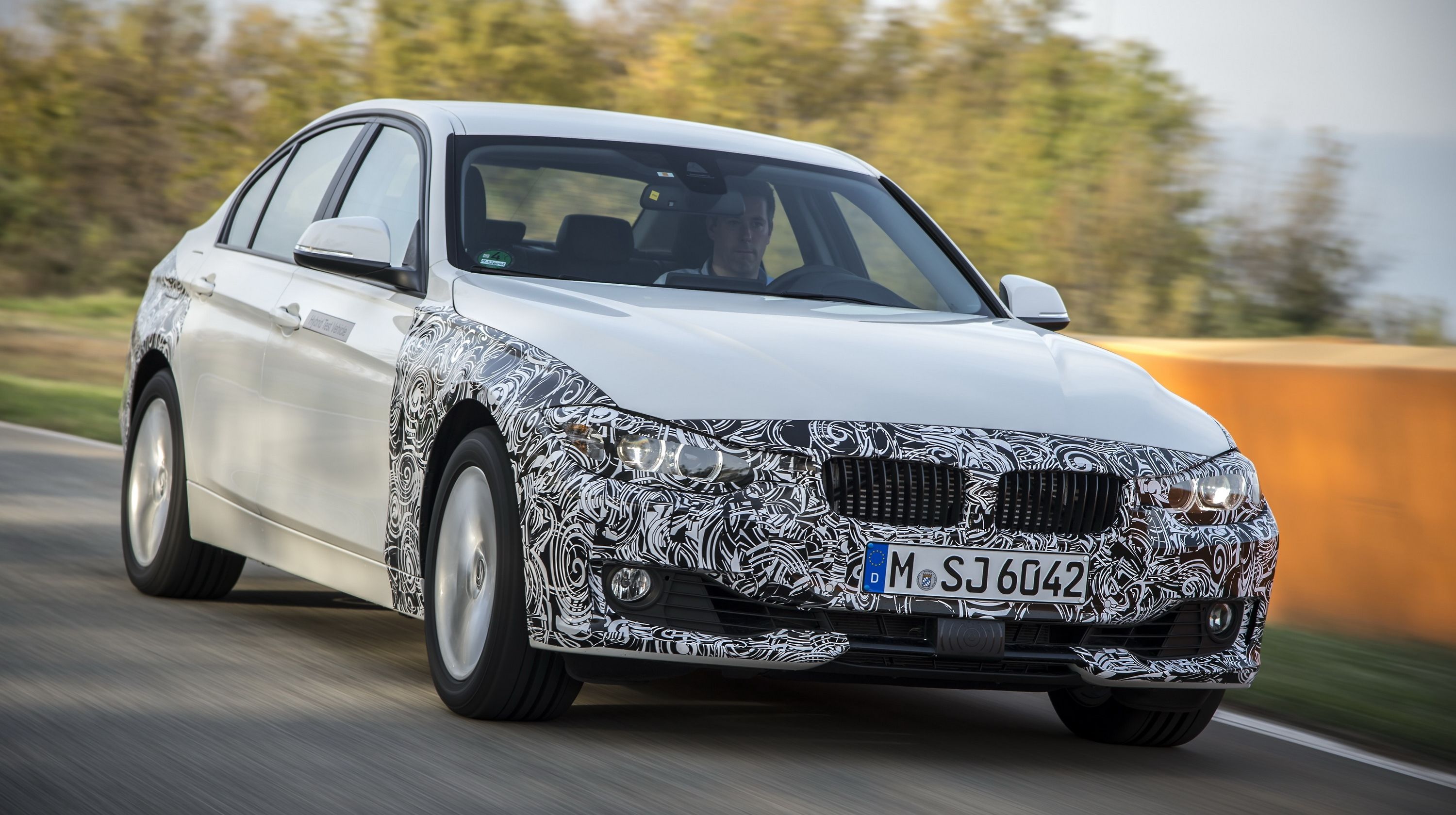It looks like BMW->ke178 is in for some huge changes in the coming decade, as it is working hard to hit the extremely stringent expectations of the EU’s upcoming emissions restrictions. These restrictions will limit fleet average CO2 outputs to just 95g/km by 2021, putting Bimmer in a spot to innovate or get penalized. In true Bimmer fashion, the brand has chosen to innovate, and the upcoming 2016 BMW 3 Series eDrive is just scratching the surface of what the German brand has in store for its large car lineup (3 Series and up).
We all know that BMW will go plug-in hybrid->ke147 on its larger cars, which is no mystery, but what about all that extra weight the batteries add to the car? Well, according to AutoCar, the German automaker is working on advanced material mixes and construction processes to help reduce weight. Things like glues, adhesives and rivets are replacing numerous spot welds. Additionally, BMW is looking to develop more aluminum, high-strength steel and carbon-fiber architecture.
Onto the hybrid system, BMW is working on building one that will be scalable from the 3 Series up to the V-12 Rolls Royce, dropping construction costs and spreading leftover costs among a number of models. This system will use a front-mounted engine that acts as a generator at peak efficiency 90 percent of the time. Behind the engine are three electric motors, one in a new, top-secret transmission and two in the rear axle. The engine will provide the power for the transmission-mounted motor and the two will combined to power the front wheels (90 percent by the motor and 10 percent by the engine at 50 mph). Of course, the rear motors will power the rear wheels, making literally every single BMW product above the 3 Series available with all-wheel drive – a pretty nice side effect to have from going green.
In addition to all of this high-tech electrification, the 2016 3 Series Plug-In will debut a 3D sat-nav system that aids the car in choosing the right mode depending on future conditions and free-wheel cruising up to 99 mph to reduce fuel consumption. Unfortunately, the upcoming 3er plug-in will not boast the advanced AWD hybrid system of the future, but it does feature a transmission-mounted electric motor similar to the one that will eventually spread across Bimmer’s range.
By the time the next-generation 3 Series Plug In arrives, which AutoCar is claiming will be around 2018 to 2022, look for the engine to run in Lambda 1 cycle 90 percent of the time for optimal fuel efficiency. Additional changes by 2022 should include reduced complexity of emission control systems for lowered cost; a simpler and cheaper transmission with fewer than three ranges; a jump in battery size thanks to the missing drive shaft; and a body that weighs about 100 kg (220 pounds) less due to advanced construction. Oh, and the addition of AWD across the range above the 3 Series; can’t forget that.
Needless to say, the 3 Series is at the forefront of BMW’s EV revolution, and we’re going to see it start to unfold with the upcoming plug-in model.
Why it matters
Automakers selling cars in the EU are in for some serious growing pains in the coming years. Once the 2021 emission restrictions go into effect, they will only continue to become stricter by 2025. This means that everyone has to get cleaner or risk penalties or worse, get the boot from the EU altogether. BMW seem to be taking a proactive stance in getting ready for this by using one of its volume sellers, the 3 Series, to test out the preliminary systems. Once BMW gets everything in order, it looks like the brand may be one of the leaders in the EV revolution.
Additionally, not only will these cars all be greener than their predecessors, but they will also feature AWD. Sounds like a win-win for everyone.

